
Meet the Chameleon
Chameleons are color-changing marvels, and their abilities go far beyond just blending in. These fascinating reptiles dazzle us with their vibrant displays, communicate through color, and have evolved some of the most unique adaptations in the animal kingdom. Let’s dive into the world of chameleons to uncover the secrets behind their colors, their incredible hunting skills, and how we can help protect these extraordinary creatures.
Why Do Chameleons Change Color?
Contrary to popular belief, chameleons don’t just change color to hide. The chameleon’s color changes serve multiple important purposes:
- Communication: Chameleons use color to signal their mood, attract mates, or warn rivals. A dominant male might flash vibrant shades of red or yellow to assert territory, while a calm chameleon might stick to muted greens.
- Thermoregulation: Lighter colors reflect heat to keep cool, while darker tones absorb warmth to raise their body temperature.
- Camouflage: Of course, blending into their surroundings helps chameleons evade predators and ambush prey, but it’s only one part of their color-changing repertoire.


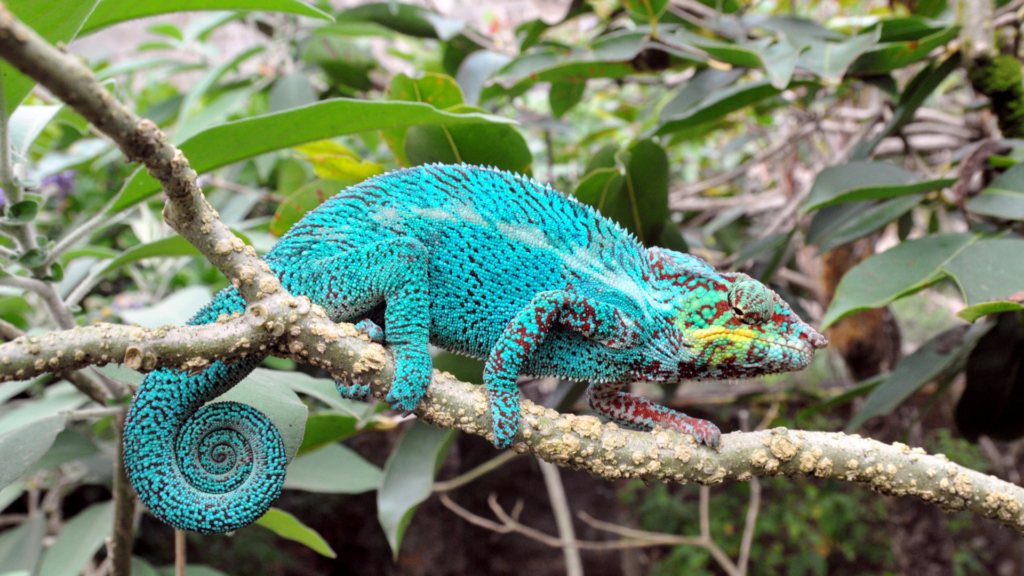

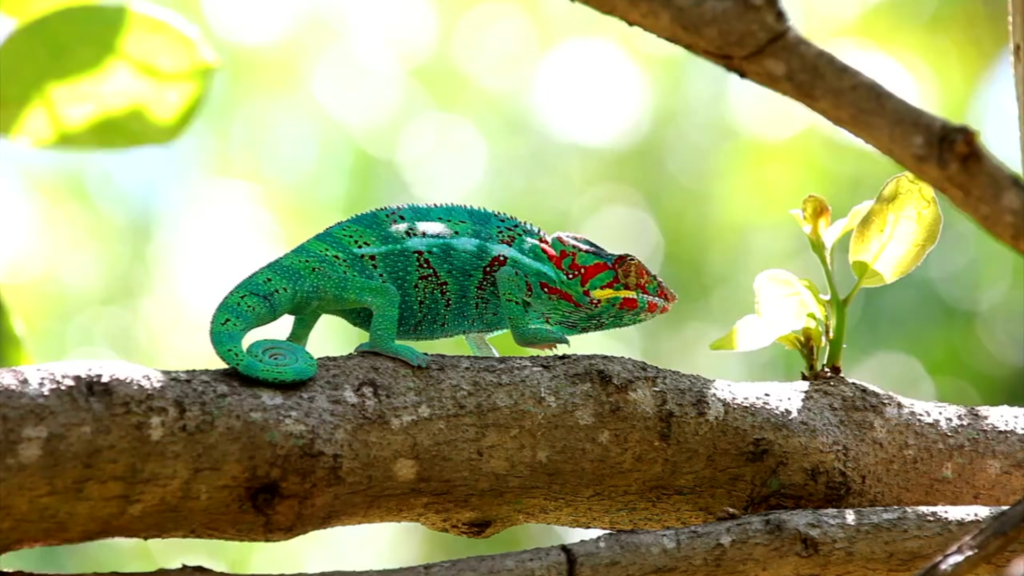
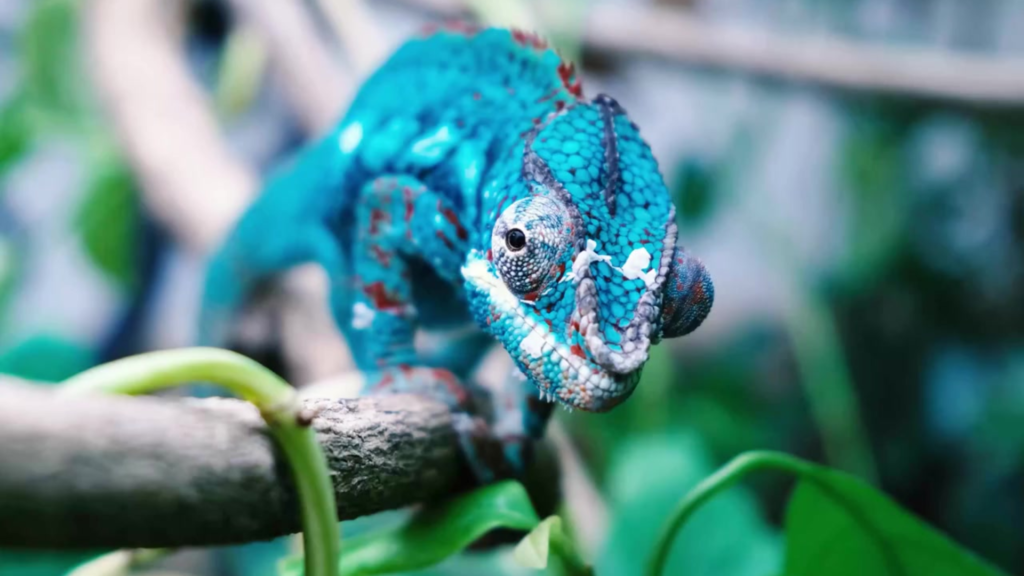
Masters of the Hunt
Chameleons aren’t just color-changing wonders—they’re also master hunters! Their remarkable adaptations make them efficient predators:
- Tongue Launch: A chameleon’s tongue can extend up to twice its body length and strike prey at speeds of up to 13 miles per hour. Sticky tips ensure that insects like crickets and grasshoppers don’t stand a chance.
- 360-Degree Vision: Each of a chameleon’s eyes can move independently, allowing it to scan for prey and predators simultaneously. When it locks onto a target, its binocular vision ensures pinpoint accuracy.
Chameleons rely on patience and precision, waiting for the perfect moment to strike and secure their next meal.
The Science Behind the Change
The secret to a chameleon’s color-changing ability lies in their skin. Beneath the surface are specialized cells called chromatophores and iridophores:
- Chromatophores contain pigments in shades of red, yellow, and black. By expanding or contracting these cells, chameleons manipulate their skin’s coloration.
- Iridophores contain nanocrystals that reflect light, creating blues and greens or enhancing the vibrancy of other colors. Together, these cells create a mesmerizing range of hues.
This sophisticated system is controlled by the chameleon’s nervous system, allowing it to adapt its appearance to environmental and social cues almost instantly.
Fascinating Chameleon Species
With over 200 species of chameleons, these reptiles are as diverse as they are colorful. Here are two standouts:
Panther Chameleon (Furcifer pardalis)
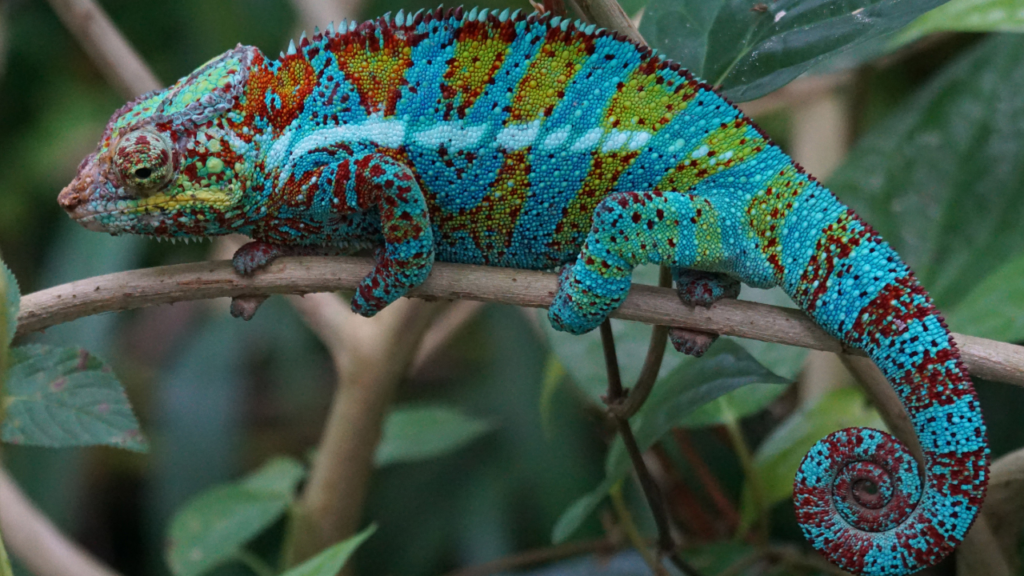
he Panther Chameleon, native to Madagascar, is renowned for its vibrant colors, which vary significantly based on its location. Males can display striking shades of red, blue, green, or yellow, making them one of the most colorful chameleon species. These chameleons are relatively larger and are often found in tropical forests and along coastal regions. Their ability to change color is not just for camouflage but also for communication, with brighter hues often signaling dominance or readiness to mate.
Parson’s Chameleon (Calumma parsonii):

he Parson’s Chameleon, also native to Madagascar, is one of the largest chameleon species, growing up to two feet long. This impressive reptile is known for its striking hues, which range from vibrant greens to yellows and blues. Its slow, deliberate movements make it a stealthy hunter, and its size and beauty have made it a favorite among wildlife enthusiasts. Parson’s Chameleons thrive in the lush rainforests of Madagascar, where they are perfectly adapted to their environment.
Every species has its own unique adaptations, making chameleons a fascinating group to study.
Protecting Chameleons in the Wild
Unfortunately, many chameleon species face threats from habitat loss, climate change, and the illegal pet trade. Deforestation in Madagascar, home to the majority of chameleon species, has dramatically reduced their natural habitats. Additionally, the capture of wild chameleons for the exotic pet market puts further pressure on their populations.
Fun Facts About Chameleons
- Chameleons can rotate their eyes independently, giving them a full 360-degree view of their surroundings.
- Some chameleons can change color in less than 20 seconds!
- The longest tongue-to-body ratio in the animal kingdom belongs to the chameleon, making their hunting technique incredibly efficient.
- Despite their slow movements, chameleons are highly effective hunters with near-perfect accuracy.
- Baby chameleons are born fully independent and start hunting for food almost immediately after hatching.
Here are some quick and quirky facts about these incredible reptiles:
- Chameleons can rotate their eyes in two different directions at once, giving them a 360-degree view of their surroundings.
- Some chameleons can change color in as little as 20 seconds!
- The longest tongue-to-body ratio in the animal kingdom belongs to the chameleon.
- Despite their slow movements, chameleons are highly efficient hunters, rarely missing their prey.
About Chameleons
- Habitat: Most chameleons are native to the forests and savannas of Madagascar and Africa, though some species are found in parts of Asia and Europe.
- Animal Classification: Reptile.
- Species Family: Chamaeleonidae.
- Region: Predominantly Madagascar, with species spread across Africa, the Middle East, southern Europe, and parts of Asia.
- Conservation Status: Varies by species, ranging from Least Concern to Critically Endangered, with many threatened by habitat loss and the pet trade.
- Characteristics and Behaviors: Known for their zygodactylous feet, prehensile tails, and independently moving eyes, chameleons also display fascinating behaviors like color-changing for communication and their remarkable ambush hunting techniques.
Chameleons belong to the family Chamaeleonidae, with most species native to Madagascar and parts of Africa. These reptiles are known for their zygodactylous feet, prehensile tails, and independently moving eyes. Their unique adaptations have made them iconic representatives of evolutionary ingenuity.
Discover More About Chameleons
Chameleons are much more than masters of disguise. Their vibrant colors, remarkable hunting skills, and diverse species make them one of nature’s most captivating animals. Want to learn even more? Watch our full video on the colorful world of chameleons here:
Chameleons: Secrets behind their Colorful changes, what makes them so colorful?
Conclusion
Chameleons remind us of the incredible diversity and adaptability of the natural world. From their dazzling color displays to their extraordinary hunting abilities, these reptiles are a testament to evolution’s creativity. By learning about and protecting chameleons, we not only preserve their beauty but also the ecosystems they call home. Let’s celebrate and safeguard these fascinating creatures for generations to come!
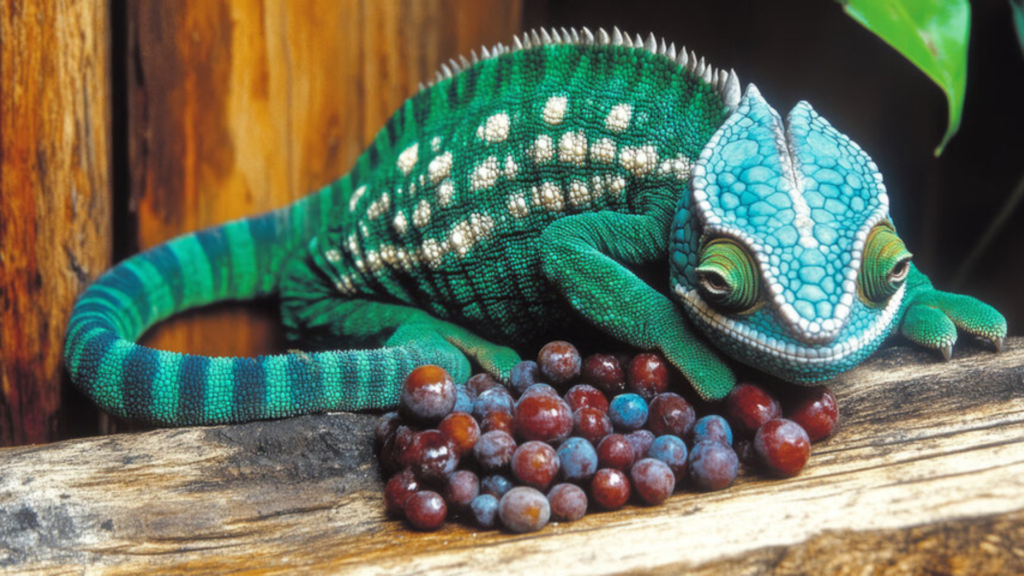

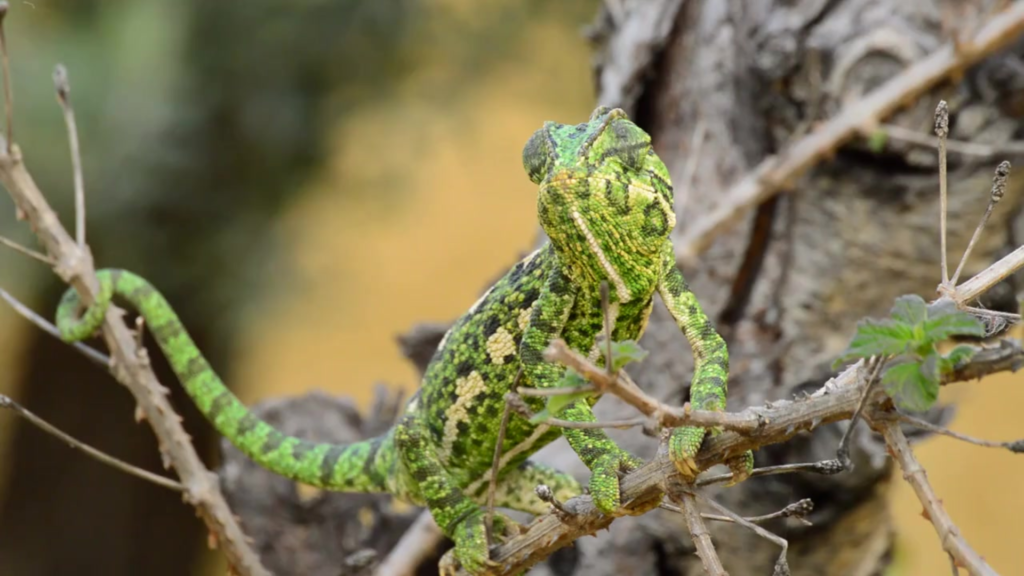

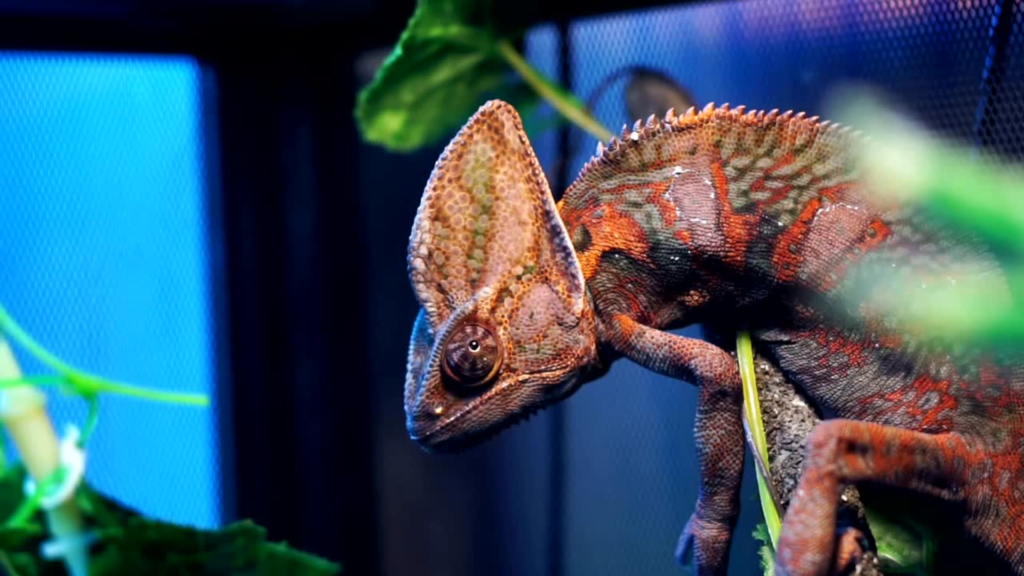
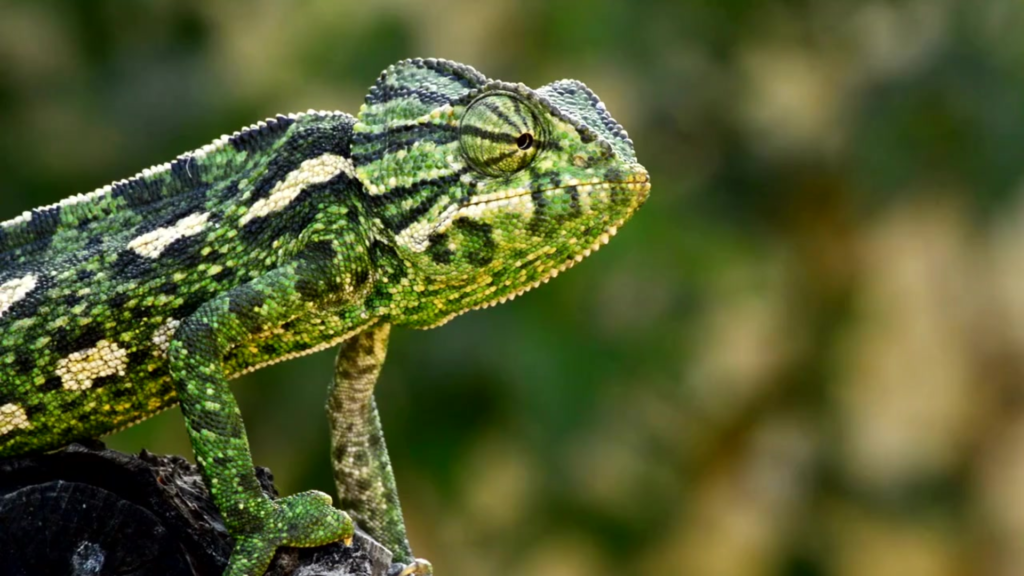



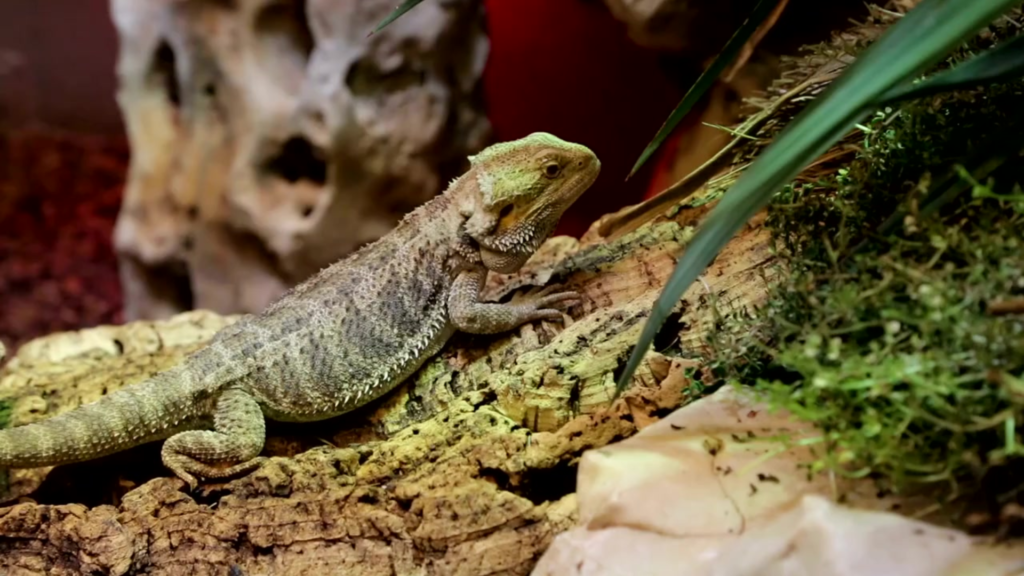






Leave a Reply